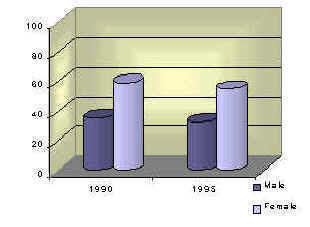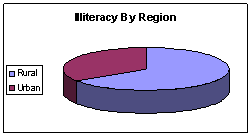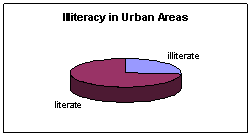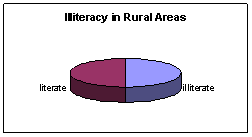|
|
Introduction |
The measurement of the educational status of the population provides an important indicator for development planning and implementation. The figure below reflects the improvements in the status of the population. Illiteracy has declined by nearly half during the period 1986 –1996, as revealed by the results of the last two censuses. This progress is the outcome of the continuous efforts and collaboration between the government and NGO’s working in this field. |
Population (10 years and over), by Educational status 1986, 1996 | 1986 | 1996 | Illiterate | 62.5 | 38.6 | Read & Write | 21 | 22.8 | Less than University | 14.7 | 32.8 | University | 1.4 | 5.8 | |
|
|
Male - Female Gap | | | Despite continuous efforts to eliminate illiteracy, especially among women, the female illiteracy rate is still persistently higher than rates among males. In 1996 female illiteracy reached about 55.2% compared to 33% among males. This discrepancy indicates women's low educational status in the past, and points to the need for concentrated government and NGO’s efforts to improve this situation. | Illiterate Population (10 years and over)
1990, 1995 |  |
|
|
|
|
Urban - Rural Gap | | | Illiterate Population (10 years and over)
1996 | 
|
| | Assessment of the educational status of the population in urban and rural areas, indicates the existence of wide discrepancies. According to 1996 statistics, illiteracy rate in rural areas was around 50% compared to 26% in urban areas. Though both rates are high, they also reveal a wide regional gap. |
|
Illiterate Population (10 years and over)
in Urban Areas - 1996 | Illiterate Population (10 years and over)
in Rural Areas - 1996 | 
| 
|
|
|
|